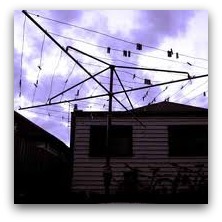 Mary MacKillop's face is on the Sydney Habour Bridge, at least temporarily. Is she becoming one of the clichés for Australia, alongside bushmen and Hills Hoist mums in our catalogue of national identity?
Mary MacKillop's face is on the Sydney Habour Bridge, at least temporarily. Is she becoming one of the clichés for Australia, alongside bushmen and Hills Hoist mums in our catalogue of national identity?
Paradoxically, in these days leading up to the canonisation of Australia's first saint, Mary MacKillop's connection with ordinary experiences (even clichés) of living in Australia is part of the story, and also what she moves us beyond. We can see the pattern of her life as something we already know and can follow, even as we acknowledge a unique stamp of goodness in her choices, and (if we follow her own lead) more than that again. It is great that she is on the Harbour Bridge, but would she want us simply to see the banner? She had her eye on something else.
Recognising someone as holy has probably always involved a dynamic between a particular life that reflected values already admired in a community and the call to recognise its challenges to a deeper way of being.
Since the Catholic Church began to formalise the process of canonisation, finally centralising it in 1200, and giving it a bureaucracy in 1588, the run of statistics on saints shows interesting trends in holiness. Martyrs and crusaders were likely to be recognised in times of persecution and threat, teachers in times of consolidation or controversy, missionaries and founders of new groups in times of change, and, some wryly note, peasants and exemplars of simple piety from times and places where the institution had trouble with the intellectuals.
But, however centralised and formal the process, every saint of the thousands acknowledged officially also has to have a popular following. The institutional wheels do not move until someone somewhere, and usually a community of people, calls the person not just good, but extraordinarily holy.
That link in the canonisation process between formal and spontaneous, institutional and popular, makes the sociology of sanctity complex. Saints need to be robust enough to carry several layers of meaning and survive fashions in their interpretation. Saints do not usually define comfortable boundaries; the best ones expand what a community imagines itself to be.
What does it mean for Mary MacKillop to be a saint 'for Australia'? Accounts of her life speak in familiar cadences about who we are: she was practical, not fussy or 'intellectual', her clear thinking was applied to real problems and made a difference to ordinary people, especially children.
The authorities gave her trouble, but she stood her ground. Her real friends stood by her and she quietly got on with her job, focused and resolute. While she is hardly the 'larrikin' and not exactly a 'mate', she had the freedom and the common touch so honoured by both those labels. In that sense she fits well on the Harbour Bridge.
But if we remember her for particular actions or qualities, for being excommunicated or establishing a successful network of outreach to the poor, we misunderstand. MacKillop was a believer. As her Josephite Sisters continue to remind us, the conviction that God is to be trusted, that Jesus really is the model of freedom, defined her commitments before anything else.
Her letters are often preoccupied with business, but underpinned by faith. She modelled a commitment to 'above all get help in prayer', and was ready to welcome a change for the good even from people who had given her most trouble because 'you will be surprised what Grace can do'.
Her life was not for herself, or particular models of work as an end in themselves. Her sense of purpose came from elsewhere. She instilled in her Sisters the importance of asking God for guidance, advocating that they pray that 'charity may shine, and a holy and unworldly wisdom influence every word and act'.
In the lifetime in leadership and out of it in her community, she was not the focus. If MacKillop was interested in bridges, it was the prayerful one between this world and the next the concerned her most. It wasn't the bridge itself we should be looking at, much less a banner on it, but where a bridge might lead.
There is a hymn about Mary MacKillop by the Melbourne musicians Geoffrey Cox and Michael Herry. Set to music by Gustav Holst, it captures the paradox well. The words of 'From Penola's Plains' celebrate Mary simply as an extraordinary Christian, rejoicing that a little town like Penola had seen 'a woman's life should so proclaim [God's] love', and praying for similar 'hearts that never waver' to show the same 'bold compassion'.
Meanwhile, the stately tune delicately locates her as a national figure through music famously used at the funeral (and wedding) of Princess Diana and, long before those, in Remembrance Day services.
Together words and music sum up the strange subversive tale of sanctity: here is a life lived largely against the grain of success as society defined it, committed to outsiders and the suffering of the Cross; this is the life we hope to hold and share as a common heartbeat for a national community.
Her face is on the Harbour Bridge. Not a cliché then but icon; in that oldest sense of window onto possibility.
 Katharine Massam is Professor of Church History at the United Faculty of Theology, Melbourne College of Divinity and Principal Fellow, Department of History, University of Melbourne.
Katharine Massam is Professor of Church History at the United Faculty of Theology, Melbourne College of Divinity and Principal Fellow, Department of History, University of Melbourne.